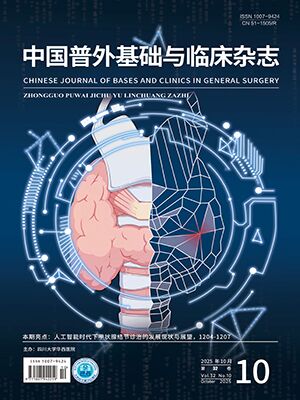The model of transplanted colonic SW480 cell line carcinoma in gymnomouse body was set up to observe the effect of octapeptide somatostatin (SMS 201-995,SMS) on the transplanted carcinoma and elucidate its mechanism. Results: the volume, weight, DNA and protein content in carcinoma cell, cell amount and proliferation index of S and G2M phase in SMS group and SMS+PG (pentagastrin) group were markedly lower than those in PG group and control group, those of PG group were markedly higher than those in control group.The cell amount of G0/G1 phase in SMS group and SMS+PG group was markedly higher than that in PG group and control group, and that of PG group was markedly lower than that in control group.All these suggested that somatostatin could not only inhibit the growth of transplanted human colonic SW480 cell line carcinoma directly but also inhibit the growthpromoting effect of gastrin on the transplanted carcinoma.The mechanism might be that somatostatin inhibit the synthesis of cAMP, DNA and protein in carcinoma cells, then inhibit the cell growing from G0/G1 phase to S and G2M phases.Our study might provide experimental basis for the homonotherapy with analogue of somatostatin in patients with large intestine carcinoma.
Citation: He Shuangwu,Zhao Yanming,Shen Kangqiang.. THE EFFECT OF SOMATOSTATIN ON THE TRANSPLANTED HUMAN COLONIC CARCINOMA AND ITS MECHANISM IN GYMNOMOUSE BODY. CHINESE JOURNAL OF BASES AND CLINICS IN GENERAL SURGERY, 1999, 6(1): 1-3. doi: Copy
Copyright © the editorial department of CHINESE JOURNAL OF BASES AND CLINICS IN GENERAL SURGERY of West China Medical Publisher. All rights reserved




